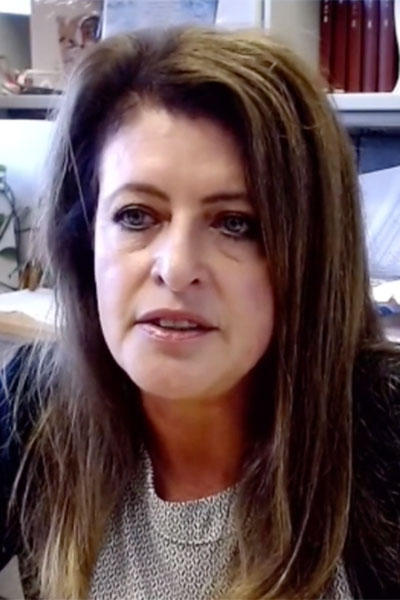Sjögren’s disease has been notable in its resistance to treatment. It is possible to manage symptoms such as dry mouth and dry eyes for some patients, but disease-modifying approaches have been elusive. As researchers move from conventional genomic assays to single-cell analysis, new therapeutic approaches are emerging.

In Demystifying of Sjögren’s Syndrome, presented Tuesday, Nov. 9, during ACR Convergence 2021, a panel of experts explored the complexity of this disease and its treatment. The session can be viewed by registered meeting participants through March 11, 2022.
“Like related autoimmune diseases, Sjögren’s shows a strong female bias as well as genetic and environmental components to risk,” said A. Darise Farris, PhD, Adjunct Professor of Microbiology & Immunology and Pathology and Director, Sjögren’s Research Clinic, Oklahoma Medical Research Foundation. “Many patients, 25%-40%, lack anti-Ro/SS-A antibodies and rely on a positive minor salivary gland lip biopsy for positive disease classification.”
The hallmark of Sjögren’s disease is focal lymphocytic infiltrates in minor salivary gland tissue. B cells and macrophages are increased in severe lesions and high focus scores, while CD4+ T cells are decreased. There are also elevated concentrations of plasma cells, Treg cells, and follicular, interstitial, and plasmacytoid dendritic cells with elevated gland fibrosis associated with increased age, focus score, and corneal damage.
Increased use of single-cell technologies has shown that salivary gland CD4+ T cell clonal expansion — but not increased cellularity — correlates with reduced salivary flow and increased minor salivary gland fibrosis, Dr. Farris said. Single-cell RNA sequencing has identified five gene expression clusters in CD4+ memory T cells from patients with primary Sjögren’s disease that could suggest different targetable pathways.
“We need to continue to focus on single-cell technologies and to track clonal expansion. And finally, we need to clarify disease progression in salivary gland tissue with follow-up of seven years and longer,” she said.

Genome-wide association studies have identified 22 risk loci in HLA- and IFN-induced genes, most in noncoding, intergenic regions that account for about 70% of the heritable risk of the disease, said Blake M. Warner, DDS, PhD, MPH, Assistant Clinical Investigator and Chief, Salivary Disorders Unit, National Institute for Dental and Craniofacial Research.
Bulk RNA sequencing shows that epigenetic control affects the differential expression of more than 6,000 genes. Epigenetic studies show that a combination of chromatin remodeling and DNA methylation result in both loss-of-function and gain-of-function gene transcription as well as aberrant transcription. Single-cell approaches are beginning to illuminate potential gene regulatory networks and novel targets.
“I think we will see many clinical states masquerading as one disease,” Dr. Warner said. “We know that cellularity changes are important in clinical disease, but it is not yet clear how.”
Recent advances in the pathophysiology of Sjögren’s disease are already moving toward targeted therapy trials.
“The pathophysiology of Sjögren’s is complex, with both type 1 and type 2 interferon, T cells, B cells, and plasma cells playing roles,” said Xavier Mariette, MD, PhD, Center for Immunology of Viral Infections and Autoimmune Diseases, Assistance Publique-Hôpitaux de Paris, Hôpitaux Universitaires Paris Sud, Le Kremlin-Bicêtre, France.

Two trials of abatacept, which targets T cells, showed no effect on the European Alliance of Associations for Rheumatology (EULAR) Sjögren’s Syndrome Disease Activity Index (ESSDAI) versus placebo. But a novel outcome composite of relevant endpoints for Sjögren’s syndrome (CRESS), which includes patient-reported symptoms, tear gland, salivary gland, and serological measures, showed significant improvement for abatacept versus placebo.
There are currently no agents targeting both interferon and T cells, Dr. Mariette said, but the phase 2 RepurpSS-I study of combined hydroxychloroquine and leflunomide showed positive results compared to placebo, including increased salivary flow.
B cell activation is another potential target. A phase 2 trial of CFZ533, an anti-CD40 monoclonal antibody, showed a significant improvement in ESSDAI score.
Another approach, B cell depletion using rituximab, failed because rituximab increases serum BAFF, which stimulates auto-reactive B cells. A trial of belimumab plus rituximab, intended to deplete B cells and block BAFF, showed a numerical improvement in ESSDAI at 68 weeks versus placebo.
The next step is ianalumab, an anti-BAFF receptor that combines B cell depletion and BAFF/BAFF-R blockade.
“If you compare high-dose ianalumab and placebo, there was significant impact for ianalumab at week 24,” Dr. Mariette reported.
The trial is continuing with a second 28-week treatment period, plus up to two years of follow-up.
Other trials are underway or planned targeting CD8+ T cells, DR+ epithelial cells and plasma cells based on blood and gland cellular subtypes and biomarkers of Sjögren’s activity. Multiple agents targeting plasmablasts and plasma cells are already used in multiple myeloma, including atacicept, which inhibits BAFF and APRIL, bortezomib and other proteasome inhibitors, and daratumumab, an anti-CD38 antibody.
The NECESSITY trial, comparing standard of care versus placebo, hydroxychloroquine, leflunomide, and mycophenolate using the EULAR Sjögren’s Syndrome Patient Reported Index (ESSPRI), ESSDAI, and a set of newly defined endpoints and biomarkers, was scheduled to launch in eight countries in late 2021.
“New therapies will come from new approaches based on immunophenotypes of the disease based on interferon, T cells, B cells, and plasma cells,” Dr. Mariette said. “We already have drugs dedicated to each of these pathways. The real challenge is to design trials using reliable biomarkers and these drugs.”
Register Today for ACR Convergence 2025

If you haven’t registered for ACR Convergence 2025, register today to participate in this year’s premier rheumatology experience, October 24–29 in Chicago. All registered participants receive on-demand access to scientific sessions after the meeting through October 31, 2026.
